1000W-1200W Roundup: Five High-End PSUs
by Martin Kaffei on December 9, 2010 1:20 PM ESTConclusion
OCZ Z1000M - High +12V ripple, only three Molex connectors
As previously mentioned the Z-Series is an "old" 80Plus Gold PSU. The efficiency is still high at up to 91% while testing with 230VAC and 50% load. On 115VAC OCZ is right at the 87% requirement, so the 80Plus Gold certificate is appropriate. In addition 83% efficiency at low load is nice to see. Of course, the power factor could be higher but the more important noise level is what makes this PSU interesting for buyers. 18dBA is a good starting point and even at 110% OCZ is below 30dBA.
Points we have to criticize are the connector configuration with only 3x Molex on one cable and the high ripple and noise results on +5V and +12V. With ~47mV and ~118mV, both are close to the ATX limit, especially +12V. While this voltage quality is no glorious result the voltage regulation is tight overall.
OCZ gives users quite a few cable ties, two 8-pin connectors for the CPU (one with 4+4-pin), and six 6/8-pin PCIe connectors; nothing out of the ordinary for a 1000W PSU. In summary, the OCZ Z-Series 1000W is a reasonable power supply, especially if the price is right and if you're okay with the peripheral cables arrangement. Currently selling at Buy.com for $205, it's not a bad PSU but the high ripple isn't in the same league as other high-end PSUs.
AeroCool V12XT 1000W - Highest ripple and noise, worst voltage regulation
The overall quality of this V12XT model is perhaps the worst we've seen from an "upper-class" PSU. While +3.3V and +5V drop below -4% and +12V has an average regulation/voltage drop, every rail has problems with ripple and noise. +3.3V reached about 72mV, so 22mV or 44% over specification, and +12V is way out of spec with more than 163mV - even cheap PSUs have better results than this! The efficiency is okay for an 80Plus Bronze PSU with up to 88% at 230VAC, but the ~70% result at 10% load is sub-standard.
HEC is the ODM behind AeroCool and there are many similarities to the GX series from Cougar, but there are still many differences in the design and AeroCool has the older layout. There is one big main capacitor from Nippon Chemi-Con, two transformers and DC-to-DC on the secondary side.
With eight SATA connectors on two cables and not much in the way of package contents, it is hardly surprising that the price is relatively low. There are more than enough connectors to build a PC with several HDDs/SSDs, but for the price it needs to be better.
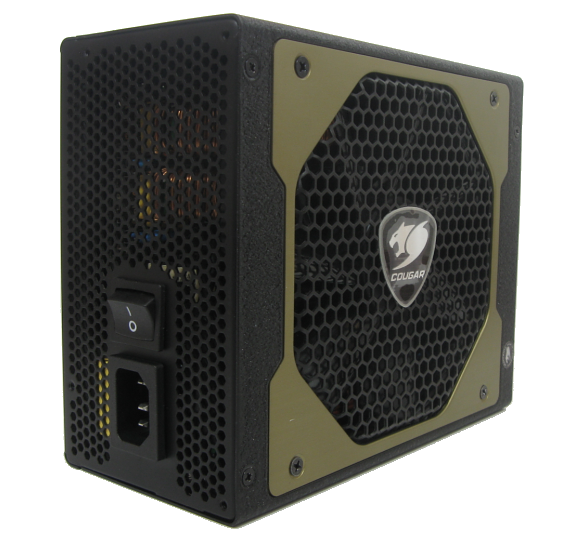
Cougar GX G1050 1050W - Robust and interesting case design, average efficiency
Cougar has a lot of experience in metal processing and is shows with their good looking GX series case. Unfortunately, a nice case isn't enough to make a good power supply. Ripple and noise is high on +5V, even if this should not be a real problem for modern PCs. +12V reached only about half of specification which is adequate and +3.3V has some buffers too.
Cougar has the same EMI filtering as AeroCool, but with an actual switcher and two main caps in the interleaved PF-preregulator. In the secondary circuit they are still using Taiwanese caps instead of Japanese ones. However, the design has output reserves like a Revolution85+ and the same robust look (with some Enermax-like cable ties in the delivery contents). Apart from that the efficiency is extremely low at 10% load. The G1050 also manages near silence at low loads.
A nice cable sleeving and a very long cable with CPU connectors are uncommon features. Certainly other manufacturers provide good sleeving, but this one looks special. The six 6/8-pin PCIe are an usual configuration but enough for triple SLI setups.
Cooler Master Silent Pro Gold 1200W - Short cables, not particularly silent
The Silent Pro series has flat cables like Corsair but very short cables and just four HDD connectors. With just 70cm for the SATA cables and up to 60cm for Molex, Cooler Master forfeits a chance to compensate for the high ripple and noise results. As expected this PSU has eight PCIe connectors for triple-SLI or quad-CrossFire.
We measured nearly 100mV ripple on the +12V rails and a little bit too much on +5V, giving us a sense of déjà vu. Cooler Master has the same disadvantages as the OCZ, but in this case there is also the noisy fan. Starting at 20dBA and ramping up to the highest levels of today's five tested power supplies, the Silent Pro is definitely a misnomer. At high load it is as loud as the old PC Power and Cooling Turbo Cool and much louder thant the previously tested Silent Pro 1000W. The effect of the L-shapped heatsinks is vanishingly low and they need more than moderate fan speeds for cooling.
Other aspects aren't quite so bad, though. Most caps are from Japan, particularly the ones on the secondary side. Moreover Cooler Master has DC-to-DC and a very good soldering quality. The filtering behind the AC inlet does look chaotic, however. All in all the Silent Pro Gold can't live up to its name because it is simply impossible to use the same fan control as the smaller models to reach acceptable temperatures. Cooler Master should use another name for their high wattage PSUs - or come up with a better design.
Antec High Current Pro 1200W - Best quality, extra modular cables, high price
Like Cooler Master Antec offers 8x PCIe connectors, but they provide longer cables and all the connectors have 6/8 pins. The HCP-1200 has many peripheral connectors, more than you can actually use in fact, but that provides users some flexibility in determining how to set up their systems. The 65cm 24-pin and CPU cables are nice and long as well, making this a good PSU for larger cases
Delta Electronics is the ODM behind this PSU. Their design has two main PCBs with a heavy duty 80mm fan providing cooling. Interesting to note is that the smaller fan stays below 19dBA through 50% load. Antec uses Japanese capacitors only (Nippon Chemi-Con and Rubycon) and four large main caps. This is on of the highest quality builds we've seen!
Our test Antec PSU didn't quite make it to 80Plus Gold efficiency levels on 115VAC, and +3.3V could be regulated better. Nevertheless, the HCP-1200 is impressive as it delivers excellent (i.e. low) ripple and noise results. +12V has a maximum ripple of 20mV, and +3.3V is even better. A generally quiet fan combined with clean voltages makes the Antec High Current Pro a good choice for enthusiasts. Our only word of caution is that you can only use five cables for peripherals, leaving you with a couple extras; you'll have to decide if that's a problem.
Closing remarks

We tested five high-end PSUs ranging from 1000W to 1200W, and we encountered a few common problems. A new topology and high wattages require manufacturers to put more effort into quality control, but above all they need to take more time. At the moment many manufactures want to reach 80Plus Gold faster than the competition, which is why we're seeing problems with the designs (e.g. high ripple and noise). Because they're in such a rush, they don't have time to correct their mistakes, so we end up with less desirable high-end PSUs. There's definitely room for improvement.
The Antec High Current Pro 1200W is one of the PSUs that delivers better results in all the areas that matter, and it's easily the best product in this roundup. It's not perfect, but in the end we have to praise the stellar voltage quality. We're giving them a Silver rather than Gold for a couple reasons; first and foremost, the price is quite high at $300 online. The second reason is a bit cheeky: our test sample managed to reach only 89.62% efficiency during 50% load, coming in just shy of an official 80Plus Gold level; likewise, we feel the HCP-1200 falls just shy of being the best in every area so a Silver Editors' Choice is fitting. There's also still that question of whether you need a 1200W PSU; for 99.9% of users, the answer is no, but there are enthusiasts out there running three or four GPUs with four or more hard drives, so if you fall into that category this is the best high-wattage PSU we've tested so far.


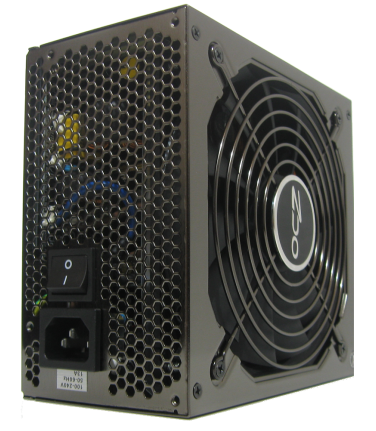
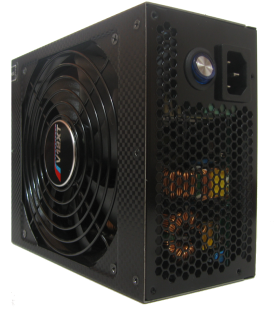
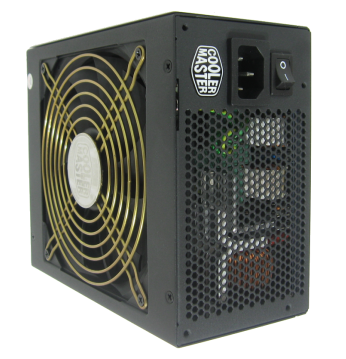
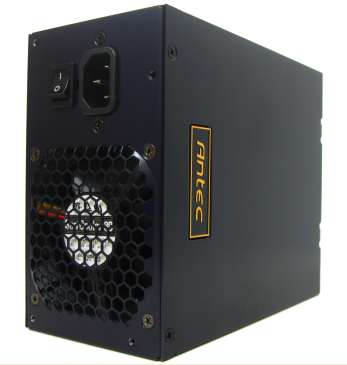








44 Comments
View All Comments
SirGCal - Thursday, December 9, 2010 - link
Ditto! I have bought nothing but Corsair powersupplies for quite some time. I got tired of my Antec supplies dieing out on me so I switched to some of the others (Seasonic) but once I found the new (at the time) Corsair's lineup... There was no competition. And generally speaking, I don't buy their ram or other products, but their power supplies are rock solid.Squuiid - Thursday, December 9, 2010 - link
+1Where's the Corsair?!
aandea - Thursday, December 9, 2010 - link
+1Where's the Corsair?!
Martin Kaffei - Friday, December 10, 2010 - link
Well, we can't test all brands out there, but we've already reviewed the AX 750, which is a very good PSU and this roundup wasn't the last one. I'm sure, Corsair will send more samples, if you are interested.landerf - Friday, December 10, 2010 - link
The AX 750 and the AX1200 are hardly comparable. You can't just assume by the model line, especially with corsair. They're not made by the same manufacturer. The AX is considered "god" tier at the moment, so it'd be expected to be in any such comparison.landerf - Friday, December 10, 2010 - link
Meant AX1200Havor - Friday, December 10, 2010 - link
Still the AX1200 belongs among the tested products as its the only one that is in the same range as the Antec High Current Pro 1200WJerricho24 - Friday, December 10, 2010 - link
I also have a few corairs and would have liked to see the AX1200 set along side the enermax Revolution 1250 or Galaxy 1000(that I also have both of)the REAL top end players seem to be missing from 1000W+ review.
Beenthere - Thursday, December 9, 2010 - link
...it's good to expose that some known and unknown brands have mediocre PSU quality. Now days you need to consider accurate PSU reviews on the specific model PSU you are considering purchasing as the quality and performance can vary drastically from one PSU model to another of the same brand.SirGCal - Thursday, December 9, 2010 - link
Even the Corsair CMPSU-1000HX or CMPSU-950TX would have been interesting in the mix. Let alone the AX1200 monster.But still, the majority of users who aren't running tripple SLI won't need anything more than a 600-900W unit depending. It would be more interesting to see a good comparison of say the ~750W range. That'll hold most systems even with two GPUs in many cases. But no problem at all with any single GPU as the majority of users run.